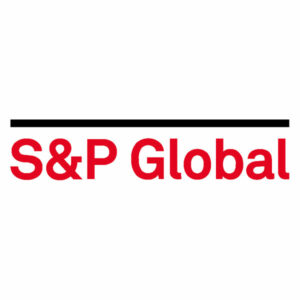
S&P Global’s next biggest business is index construction and analytics. In other words, S&P publishes indices, such as its flagship S&P 500 Index, that are used by investors and allocators in stock, bond, derivative, and commodity markets to communicate about investment performance. Similar to the credit ratings industry, the leaders in indexing benefit from protocol network effects, data network effects, and principal-agent incentives. As a result, one or two standards dominate the indexing market for each country or investment category. In the case of S&P Global, its S&P and Dow indices are the dominant indices that global industry participants use when communicating about United States stock and derivative performance. Additionally, some of its international indices also have meaningful market share. S&P Global also maintains strong indexing market share in a number of commodity markets through its Platts division. Finally, the index provider business benefits from the growth of capital markets, which we believe will continue to grow faster than GDP over time, as well as from secular trends within capital markets such as indexing and the “slicing-and-dicing” of portfolios based on ESG characteristics.
In addition to its credit rating and indexing businesses, S&P Global also own financial market data providers such as Capital IQ and SNL, which benefit from switching costs. Since these products are commonly integrated into spreadsheets and other customer workflow, customers are resistant to changing providers, though they may be induced to switch by a sufficiently compelling pricing offer from a competitor such as Bloomberg, FactSet, and Refinitiv.
Finally, S&P Global is expected to close its proposed merger with IHS Markit in Q4 2021. This acquisition will further bolster S&P’s financial markets data and index offerings as well as expand S&P Global’s information services portfolio by adding strong offerings in industries such as energy and transportation.
As a result of the industry and competitive dynamics of its various business lines, we believe S&P Global is likely to grow volume and pricing at attractive rates for years to come. Furthermore, and remarkably, S&P Global’s businesses require very little incremental capital to add another user, leading to incredibly high incremental and overall returns on capital. We believe these characteristics increase the earnings multiple investors should be willing to pay for the company.
Back to Global Champions Summary Page
1 See https://web.archive.org/web/20191031183406/https://www.standardandpoors.com/en_US/delegate/getPDF?articleId=2148688&type=COMMENTS&subType=REGULATORY.
2 In 2012, for the first time in its history, Heineken decided to get its debt rated. Based on Heineken’s post-mortem analysis, getting its debt rated saved the company 30 to 50 basis points of yearly interest cost. See http://treasurytoday.com/2013/02/do-companies-need-to-be-rated-to-issue-bonds.

